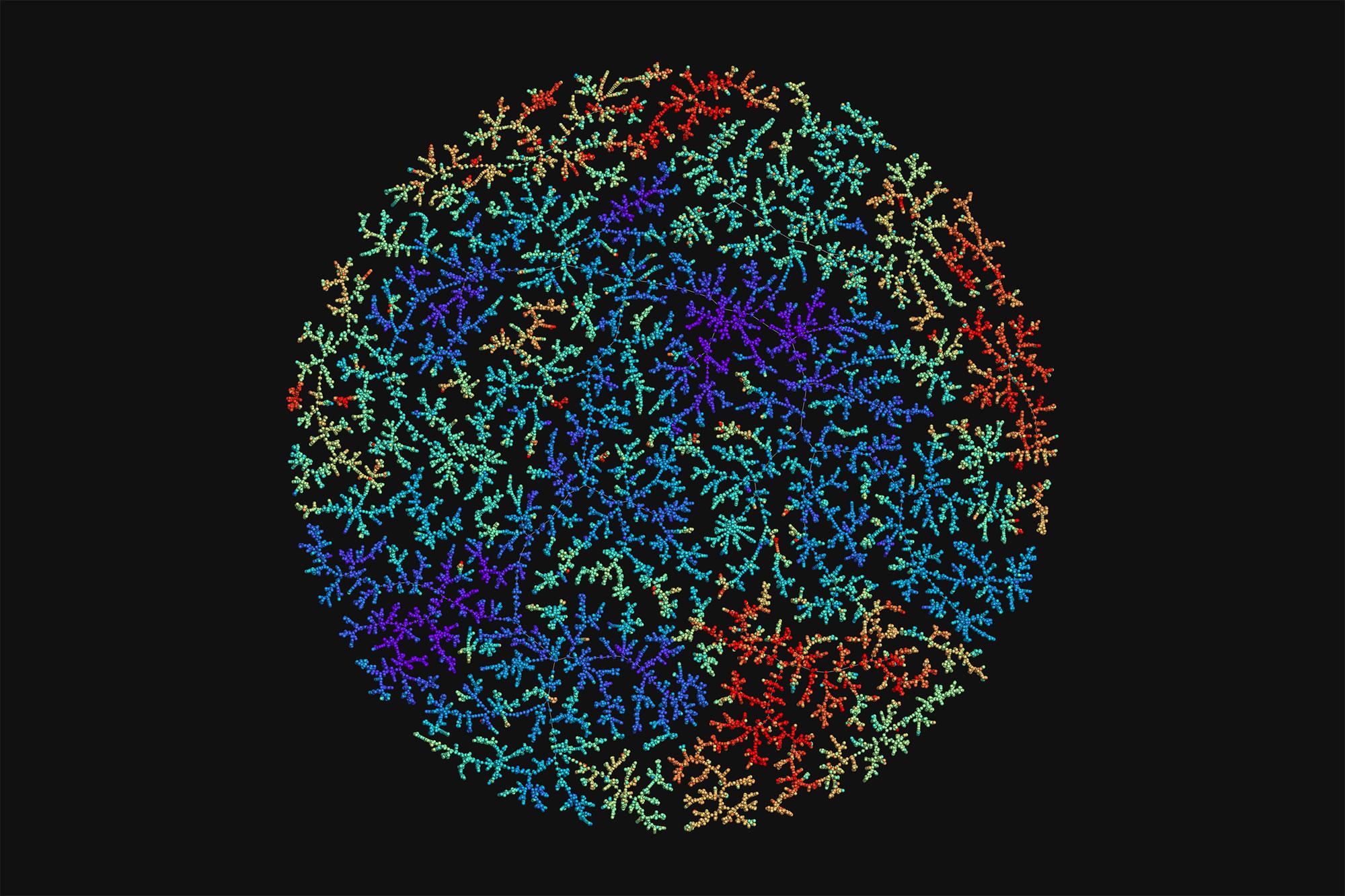Completed project: Artificial alternatives to important natural substances

Researchers at the University of Bern are creating artificial substances that are similar to known antibiotics. Through targeted modifications, however, they could overcome existing antibiotic resistances and at the same time trigger fewer side effects.
Caption: Overview of all amino acid sequences of known peptides found in public databases as available in 2021. The different colours indicate different sequence lengths.
When nothing else works, maybe colistin or polymyxin will. Nowadays these antimicrobial peptides of natural origin are used as last resorts against many multiresistant germs. Yet they can have considerable side effects, and there are now bacteria that are resistant to them. Researchers led by Jean-Louis Reymond from the University of Bern are therefore looking for alternatives that overcome existing resistances while causing fewer side effects. Other peptides offer particular promise in this regard. However, Reymond and his team do not search for them in nature. They develop them with the help of what is known as the chemical space approach. This term refers to the total number of existing molecules that can be used as medicines. Nowadays the chemical space can be explored efficiently using bioinformatic methods and automated chemical synthesis. The researchers from the University of Bern expanded it to include new molecules that are not found in nature and which have therefore not been studied previously.
One promising active ingredient turned into many
In this way, they have created several peptides that have proven effective against various bacterial pathogens in initial tests. Among these, they focused on a particularly promising substance called G3KL. Their goal was to further develop this peptide by specifically modifying its molecular structure so that it would have ideal properties for medical use. To this end, they first clarified exactly how the effect of G3KL comes about. Imaging and resistance studies showed that it kills bacteria by a membrane disruptive mechanism, and that bacteria can acquire resistance by changes in membrane composition that are in part comparable yet different from resistance mechanisms against polymyxin. At the same time, these studies led to the surprising identification of several more highly active peptides providing a promising new series of lead compounds.
Now the substances are optimised
The researchers are now optimising them, again by investigating their mechanism of action and assessing which ones might be useful for medical purposes. Furthermore, the project has shown that the methods employed can be used to systematically create new antibiotics that overcome existing resistances. One particular advantage of this approach is that it generates substances that are easy to synthesise and can therefore be optimised. Whether applicable drugs can be developed on the basis of the peptides that have now been generated must first be clarified in further tests.
November 2022
